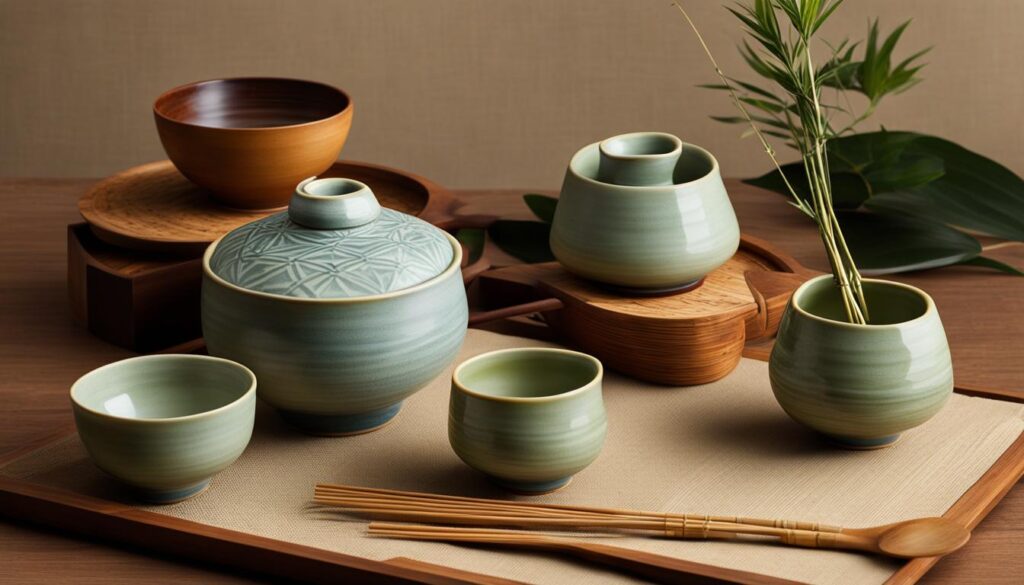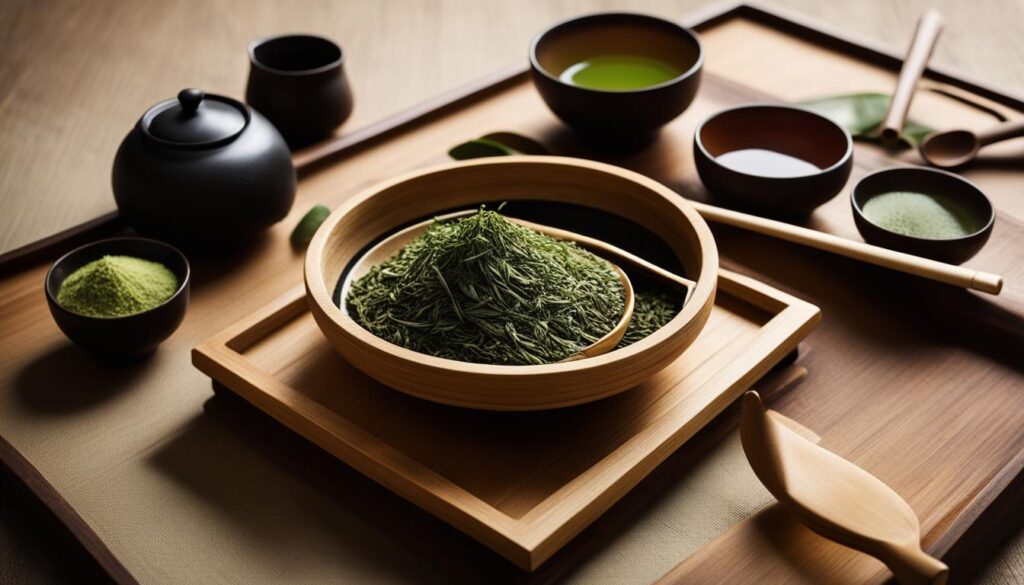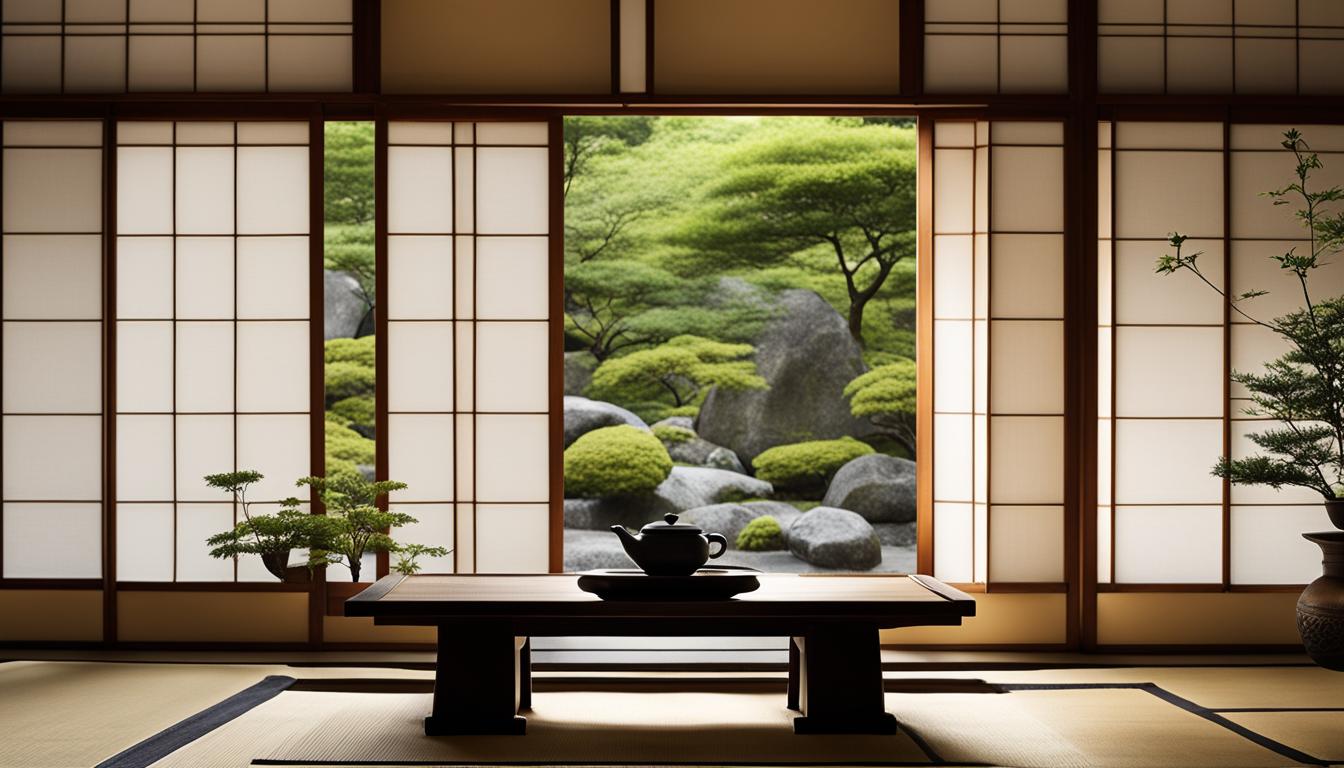The Japanese tea ceremony, also known as chanoyu or chado, is a cultural practice that goes beyond the simple act of drinking tea. It exemplifies the values of harmony, respect, and peace that are integral to Japanese culture. The ceremony has a rich history, originating in China and then brought to Japan in the 8th century. The ceremony evolved over time, with tea masters like Sen no Rikyu playing a significant role in shaping its form. The ceremony involves precise movements, specialized utensils, and a deep appreciation for beauty. It is a way to connect with others and with nature, promoting mindfulness and inner peace. Participants in the tea ceremony adhere to specific dress codes and follow a set of etiquette guidelines. By exploring the art of the Japanese tea ceremony, one can gain a deeper understanding of Japanese culture and tradition.
Key Takeaways:
- The Japanese tea ceremony is a cultural practice that represents harmony, respect, and peace.
- It originated in China and was brought to Japan in the 8th century.
- Tea masters like Sen no Rikyu played a significant role in shaping the ceremony.
- The ceremony involves precise movements, specialized utensils, and a deep appreciation for beauty.
- Participants in the tea ceremony adhere to specific dress codes and etiquette guidelines.
Marky’s Tea Collection and the Art of Japanese Tea Ceremony
At Marky’s Tea Collection, we are passionate about the art and ritual of the Japanese tea ceremony. Our brand celebrates the traditions and techniques that have been passed down through generations, offering a curated selection of the finest teas from Japan and a range of specialized utensils needed for the ceremony.
Our collection is designed for tea enthusiasts and those interested in exploring the beauty and mindfulness of the Japanese tea ceremony. We believe that the ceremony goes beyond the act of drinking tea – it is a way to connect with others and with nature, promoting peace and tranquility in our busy lives.
We understand the importance of etiquette in the tea ceremony, and our brand provides guidance on how to conduct oneself during the ceremony. From the proper way to hold a tea bowl to the precise movements of whisking matcha, we aim to ensure that every cup of tea is made with grace and respect.
Whether you are a beginner or an experienced practitioner, Marky’s Tea Collection offers resources, classes, and workshops to deepen your knowledge and experience of the tea ceremony. We are dedicated to preserving the traditions of this ancient art form and sharing its beauty with a wider audience.
| Japanese Tea Ceremony Utensils | Japanese Tea Ceremony Schools | Japanese Tea Ceremony Etiquette |
|---|---|---|
| Tea whisk (chasen) | Urasenke, Omotesenke, Mushanokojisenke | Proper way to hold a tea bowl |
| Tea scoop (chashaku) | Enshuryu, Yabunouchi, Sumitomoryu | Precise movements of whisking matcha |
| Tea bowl (chawan) | Mushakojisenke, Konnichian, Shorinryu | Etiquette for serving and receiving tea |
| Silk cloth (chakin) | Ueda Soko, Tomita, Sohenryu | Cleaning and caring for utensils |
Experience the art of the Japanese tea ceremony with Marky’s Tea Collection and immerse yourself in the rich traditions and rituals of this ancient practice. Discover the beauty and mindfulness of the tea ceremony as you deepen your knowledge and appreciation for this cultural treasure.

The Preparation of Matcha – Exploring the Varieties of Matcha Powders
Matcha, the powdered green tea used in the Japanese tea ceremony, comes in various varieties, each offering a unique taste and texture. Understanding the different types of matcha powders can greatly enhance the experience of the tea ceremony. From delicate and smooth ceremonial grade matcha to robust culinary matcha, there is a matcha to suit every preference.
When it comes to the Japanese tea ceremony, matcha is prepared with meticulous attention to detail, using specialized utensils. The process involves measuring the matcha powder, whisking it with water to create a frothy texture, and serving it in a traditional tea bowl. The tools used in this process are essential to achieving the perfect cup of matcha, and they contribute to the overall aesthetic and experience of the ceremony.
If you’re interested in exploring the art of matcha preparation and participating in traditional Japanese tea ceremonies, Tokyo offers various classes and guides. These resources provide hands-on instruction, allowing you to learn the intricacies of the tea ceremony and gain a deeper understanding of the cultural significance behind it. Whether you’re a tea enthusiast or simply curious about Japanese traditions, immersing yourself in the world of matcha can be a rewarding and enriching experience.
Utensils Used in Japanese Tea Ceremony – A Guide to the Must-Have Accessories for Making a Perfect Cup of Tea
The Japanese tea ceremony is an art form that requires the use of specialized utensils to create a perfect cup of tea. Each utensil has its own purpose and contributes to the overall experience of the ceremony. Let’s explore the essential utensils used in the Japanese tea ceremony and their significance.
Tea Whisk (Chasen)
The tea whisk, or chasen, is a bamboo whisk used to mix the matcha powder and water. It is meticulously handcrafted with delicate bristles that help create a frothy and smooth texture. The whisking motion not only blends the tea but also creates a sense of tranquility and mindfulness during the ceremony.
Tea Scoop (Chashaku)
The tea scoop, or chashaku, is a bamboo scoop used to measure the precise amount of matcha powder for each serving. It ensures the correct ratio of matcha to water, resulting in a balanced and flavorful cup of tea. The tea scoop is traditionally made from bamboo to complement the natural and minimalist aesthetic of the tea ceremony.
Tea Bowl (Chawan)
The tea bowl, or chawan, is where the matcha is prepared and served. It is carefully selected for its shape, size, and aesthetic appeal. The bowl’s design also influences the taste and aroma of the tea. Each tea bowl has its unique character, and the choice of bowl can reflect the season, occasion, or personal preference of the host.
Silk Cloth (Chakin)
The silk cloth, or chakin, is used to clean and dry the utensils before and after the tea ceremony. It is meticulously folded and placed within reach of the host. The silk cloth represents purity and respect for the utensils, as well as an appreciation for the craftsmanship and attention to detail that goes into their creation.
To truly appreciate the art of the Japanese tea ceremony, it is important to understand the significance of these utensils and their role in creating a perfect cup of tea. The precise movements and attention to detail involved in using these utensils reflect the values of harmony, respect, and mindfulness that are integral to the tea ceremony.

Conclusion
The Japanese tea ceremony is a captivating art form that has deep historical roots. It holds a special place in Japanese culture and has evolved over time to become a cherished tradition. As we have explored, the tea ceremony is more than just drinking tea; it is a way of connecting with others, promoting mindfulness, and finding inner peace.
For those interested in delving deeper into the art of the tea ceremony, there are various schools and organizations that offer classes and workshops. These opportunities provide a chance to learn about the history and traditions of the tea ceremony while honing your own skills. From understanding the proper etiquette to mastering the use of the essential utensils, these classes offer a comprehensive learning experience.
The tea ceremony is not simply about following a set of rules; it is a way of life. The ceremony teaches us the importance of harmony, respect, and beauty. It invites us to slow down and appreciate the present moment. By immersing ourselves in the rituals and customs of the tea ceremony, we can gain a profound appreciation for Japanese culture and its emphasis on mindfulness and tranquility.
So why not embark on a journey to explore the wonders of the Japanese tea ceremony? From its rich history to its schools and classes, there is so much to discover. By participating in the tea ceremony, we can not only enjoy a delicious cup of tea but also embark on a transformative experience that nourishes the mind, body, and soul.
FAQ
What is the Japanese tea ceremony?
The Japanese tea ceremony, also known as chanoyu or chado, is a cultural practice that goes beyond the simple act of drinking tea. It exemplifies the values of harmony, respect, and peace that are integral to Japanese culture.
What is the history of the Japanese tea ceremony?
The Japanese tea ceremony originated in China and was then brought to Japan in the 8th century. Over time, it evolved with contributions from tea masters like Sen no Rikyu, shaping its form into what we know today.
What are the utensils used in the Japanese tea ceremony?
The essential utensils for the Japanese tea ceremony include a tea whisk (chasen), tea scoop (chashaku), tea bowl (chawan), and a silk cloth (chakin).
How can I learn more about the Japanese tea ceremony?
There are various schools and organizations that offer classes and workshops for individuals interested in learning about the tea ceremony. These resources provide an opportunity to deepen your knowledge and experience of this ancient art form.
What is the role of matcha in the Japanese tea ceremony?
Matcha is a powdered green tea that plays a central role in the Japanese tea ceremony. It is prepared meticulously and requires specific utensils. There are different varieties of matcha powders available, each with its unique taste profile and texture.
Why is etiquette important in the Japanese tea ceremony?
Etiquette is an essential aspect of the Japanese tea ceremony. It guides participants on how to conduct themselves with grace and respect, enhancing the overall experience of the ceremony.





